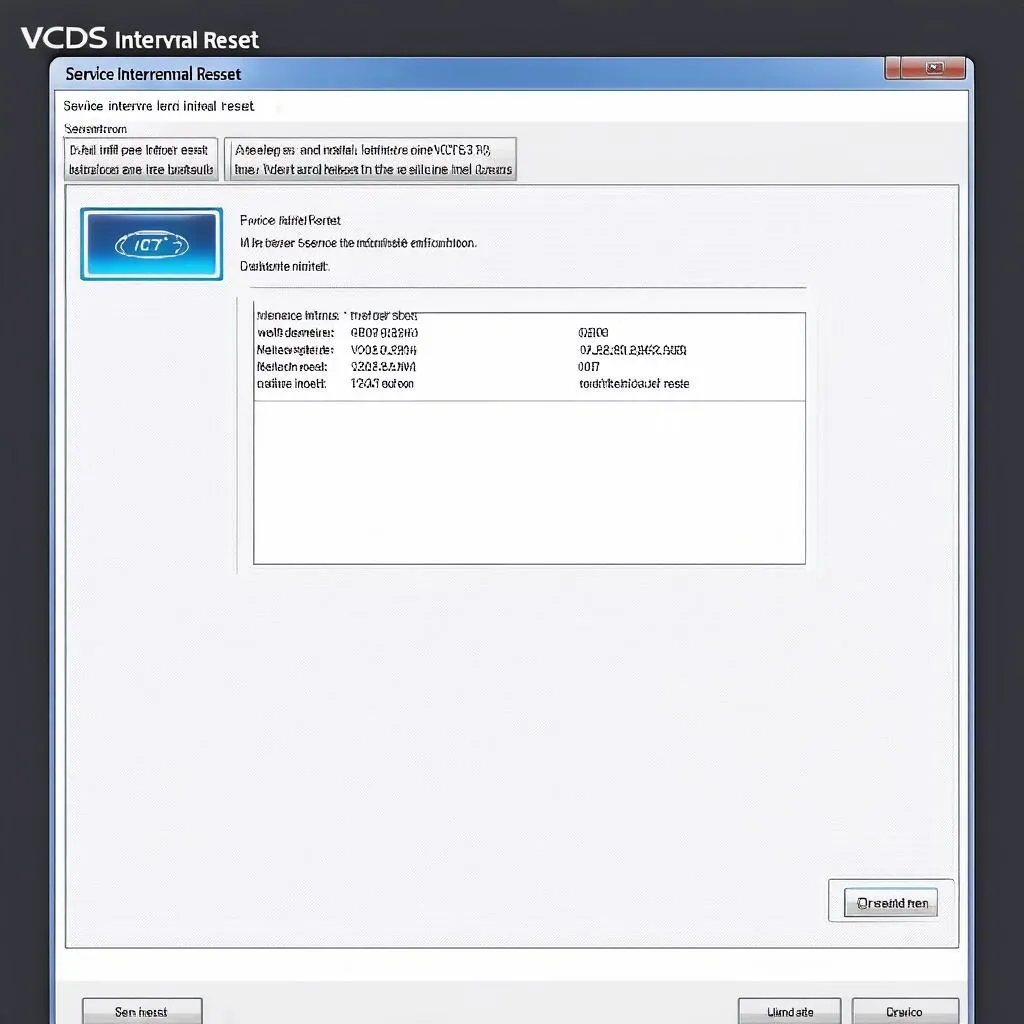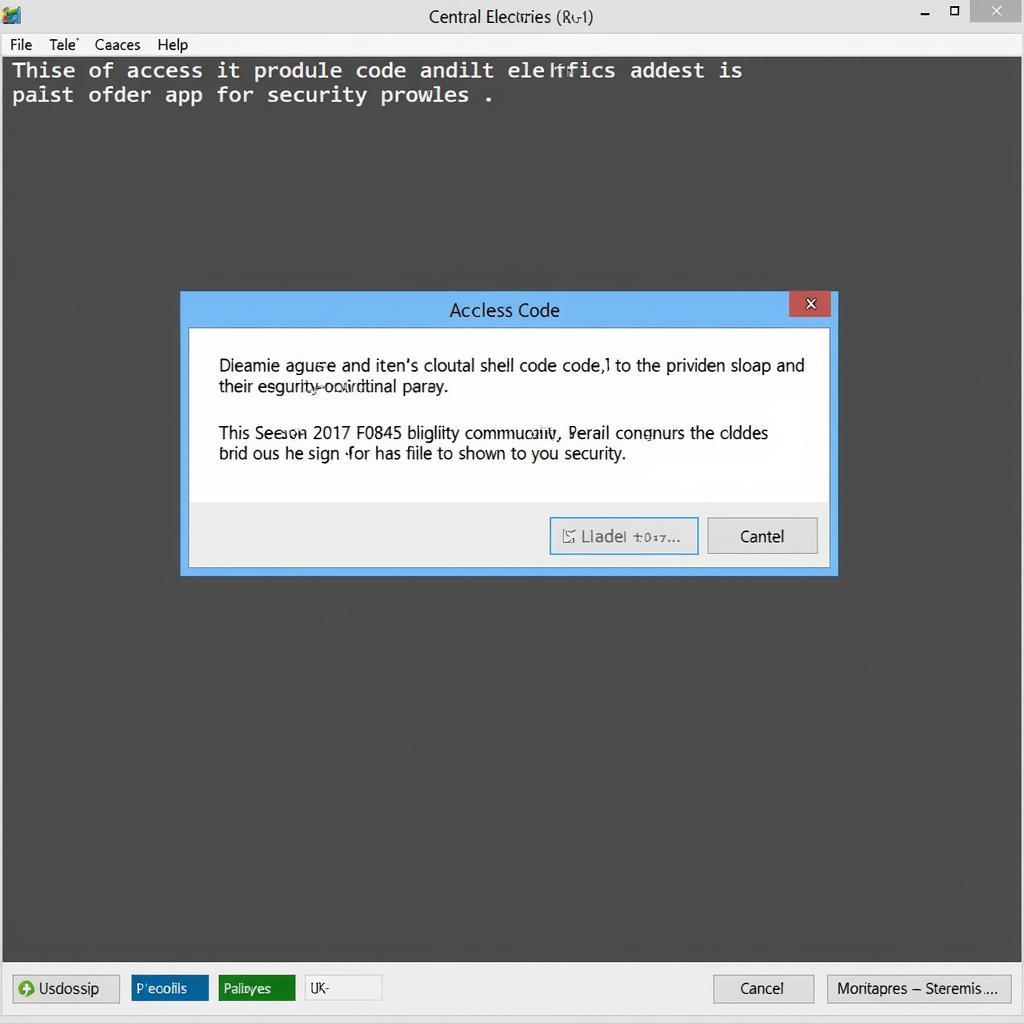VCDS air suspension calibration is a crucial procedure for maintaining the optimal performance and ride comfort of vehicles equipped with air suspension systems. This guide provides a deep dive into the process, common issues, and solutions, catering to car owners, repair shop owners, and automotive technicians.
Understanding the intricacies of VCDS air suspension calibration can be challenging. This comprehensive guide aims to demystify the process, providing you with the knowledge and insights necessary to address common air suspension problems. From diagnosing faults to executing the calibration procedure, we’ll cover everything you need to know.
What is VCDS Air Suspension Calibration?
VCDS, or Vag-Com Diagnostic System, is a powerful software tool used for diagnosing and troubleshooting issues in Volkswagen, Audi, Seat, and Skoda vehicles. When it comes to air suspension, VCDS allows for precise calibration, ensuring the system functions correctly. This calibration process involves adjusting the ride height sensors and control modules to maintain the desired vehicle level. A properly calibrated air suspension system guarantees a smooth, comfortable ride and even tire wear.
Why is VCDS Air Suspension Calibration Important?
Calibration is essential for the longevity and performance of your air suspension. An uncalibrated system can lead to uneven ride height, premature wear of components, and a compromised driving experience. Regular calibration ensures the vehicle maintains its correct ride height, optimizing handling and stability.
Common Problems Requiring VCDS Air Suspension Calibration
Several issues may necessitate VCDS air suspension calibration. These include:
- Uneven Ride Height: One corner of the car sits lower or higher than the others.
- Compressor Runs Excessively: The air compressor operates more frequently than usual.
- Suspension Warning Lights: Dashboard warning lights related to the air suspension illuminate.
- Rough Ride Quality: The vehicle’s ride feels harsher than normal.
- Vehicle Sagging: The car lowers itself after being parked for a period.
How to Perform VCDS Air Suspension Calibration
Performing a VCDS air suspension calibration requires careful attention to detail. Here’s a step-by-step guide:
- Connect VCDS to the OBD-II port. Ensure the ignition is switched on.
- Select the correct control module for the air suspension system.
- Access the “Calibration” or “Basic Settings” function.
- Follow the on-screen prompts to initiate the calibration procedure. This usually involves positioning the vehicle on a level surface and ensuring the tires are properly inflated.
- Monitor the VCDS software for confirmation of successful calibration.
Much like vcds steering angle sensor calibration, the process requires precision and the right tools. Ignoring these issues can lead to further problems down the road, impacting both safety and performance.
Tips for Successful VCDS Air Suspension Calibration
- Always perform the calibration on a level surface.
- Ensure the tires are inflated to the correct pressure.
- Do not interrupt the calibration process.
- Consult the vehicle’s service manual for specific instructions.
When to Seek Professional Help
While VCDS provides a powerful tool for DIY enthusiasts, some situations warrant professional intervention. If you’re uncomfortable performing the calibration yourself, or if you encounter persistent issues despite attempting the procedure, it’s best to consult a qualified technician. They have the expertise and specialized equipment to diagnose and resolve complex air suspension problems.
Similar to vcds level control, precise calibration is key for a smooth and comfortable ride. Understanding the process and knowing when to seek professional assistance can save you time and money in the long run.
Conclusion
VCDS air suspension calibration is an essential maintenance procedure for vehicles equipped with air suspension. Proper calibration ensures optimal performance, ride comfort, and longevity of the system. By understanding the process and following the guidelines outlined in this guide, you can effectively address common air suspension issues and maintain a smooth, comfortable ride. However, remember that professional help is always available if needed.
FAQs
-
How often should I calibrate my air suspension? It’s generally recommended to calibrate your air suspension every time tires are replaced or the suspension components are serviced.
-
Can I calibrate my air suspension without VCDS? While some vehicles may offer limited calibration options without VCDS, the software provides the most comprehensive and precise calibration method.
-
What are the signs of a faulty air suspension compressor? Excessive noise, continuous running, and inability to maintain ride height are common indicators of a faulty compressor.
-
How much does a professional VCDS air suspension calibration cost? The cost varies depending on the vehicle and the specific service required.
-
Can I damage my air suspension by attempting to calibrate it myself? While unlikely, improper calibration procedures can potentially damage the system. Always consult the vehicle’s service manual and seek professional help if needed.
-
What are the benefits of a properly calibrated air suspension system? A calibrated system ensures optimal ride comfort, handling, and even tire wear, extending the lifespan of suspension components.
-
What should I do if my air suspension warning light stays on after calibration? If the warning light persists, it indicates a deeper issue requiring further diagnosis by a qualified technician.
If you need assistance, contact us via Whatsapp: +1 (641) 206-8880, Email: CARDIAGTECH[email protected], or visit us at 276 Reock St, City of Orange, NJ 07050, United States. Our customer service team is available 24/7. You might also be interested in articles about steering angle sensor calibration vcds or porsche vcds. For further information regarding steering angle sensor g85 calibration vcds, please visit our website.


